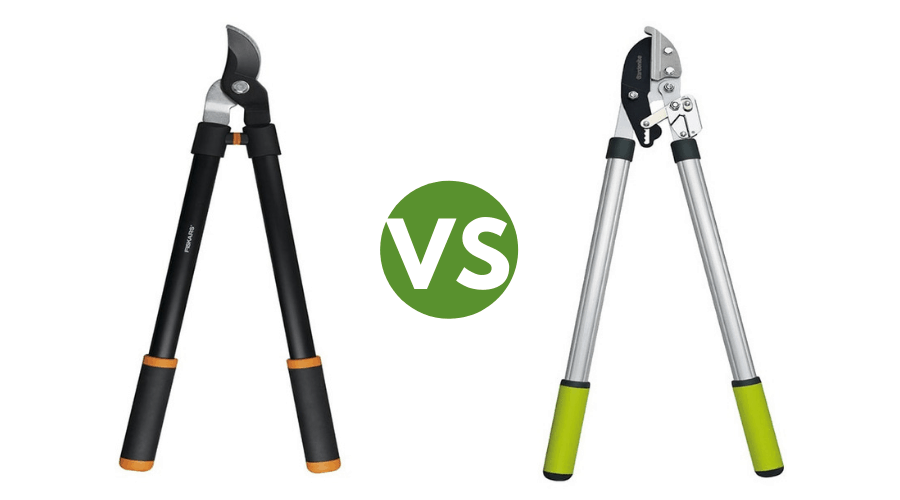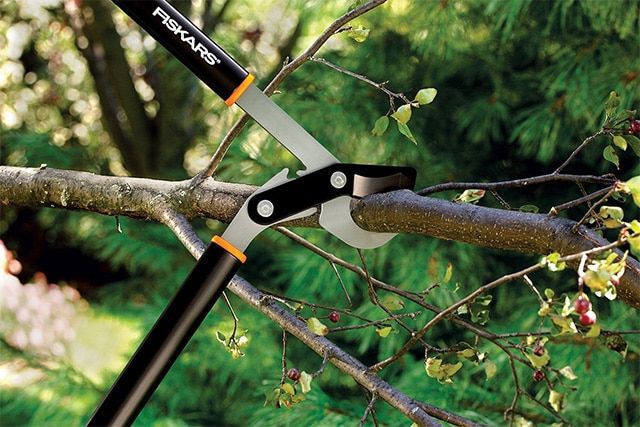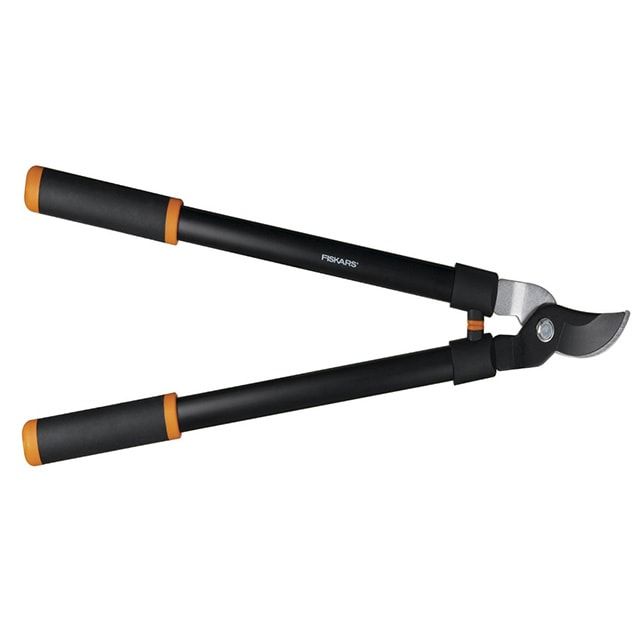Trimming trees and brush isn’t just for ornamental purposes. Most trees, fruiting vegetation, and woody bushes need a regular maintenance schedule to keep them healthy and producing. Most small hand tools aren't quite up to this job, and what you want to look for to help maintain these types of plants in your yard is a good lopper.
What’s a lopper you ask? It’s a longer handled tool that cuts through thicker branches with ease and precision, and truly is a must have for your yard upkeep. Otherwise known as tree trimmers and branch cutters, loppers come in a couple different styles, but are categorized by their cutting heads: the bypass or anvil type.
Why bother with this knowledge if a cutting tool is a cutting tool? Afterall, both cut through what you need them to. Wrong - both will easily remove vegetation through the severing of a branch, but what you need to be aware of is how each head can affect the living vegetation you leave behind.
BYPASS VS ANVIL LOOPER COMPARISON TABLE
|
Model |
Design |
Weight |
Pros |
Cons |
Price |
|---|---|---|---|---|---|
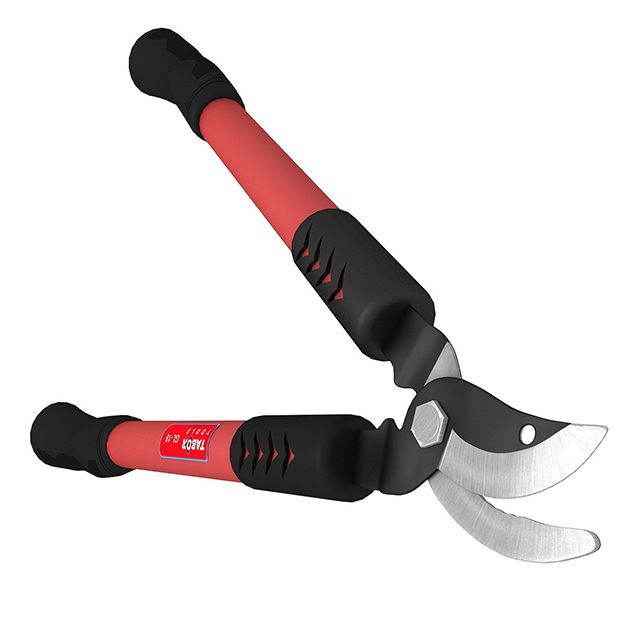
Bypass |
Steel head with handle design |
Slightly lighter and easier to use |
Clean, side by side cut for live vegetation |
Doesn’t cut larger branches with as much ease |
Costs start around $20 to $70 depending on brand |
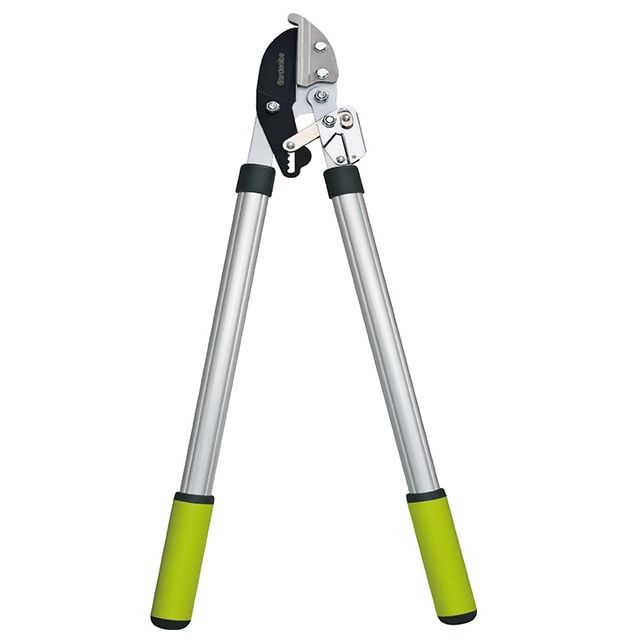
Anvil |
Steel head with handle design |
Tends to be heavier and more difficult to grip |
Crushing cut for quick removal and dead branches |
Handles larger diameter cuts |
Costs start around $20 to $70 depending on brand |
Bypass Lopper
PROS
- Provides a clean cut
- Can cut close to existing branches without leaving a nub
- Good for live vegetation
CONS
- Need to turn the cutting head to get the correct pruning angle
- Doesn’t handle larger diameters as well
- Can jam when cutting dry, dead branches
Anvil Lopper
PROS
- Powerful for dead vegetation
- Can handle larger diameter cuts
- Doesn’t stick to stem as it cuts
CONS
- Crushes soft plant material - takes longer to heal
- Won’t cut all the way through when worn
- Is more bulky to hold
Loppers: Why Are They Useful?
By judiciously removing the healthy growth of many plants, you actually stimulate further growth resulting in more vigorous vegetation and flowering. Knowing when and how to prune your plants is also important, but using the correct tools is crucial for overall plant well-being.
Loppers are invaluable to have handy if you have any woody vegetation on your property. Woody vegetation is defined by perennial stems that bud and leaf out year after year without dying back to the ground. This includes most fruiting trees and bushes, ornamental trees and shrubs, boxwoods, some vines (such as certain varieties of clematis, trumpet vines, etc…), and roses to name a few.
Dead or diseased materials should also be removed from living vegetation both to allow room for new growth, and to keep diseases and rot from spreading. Simply breaking off dead branches results in rough nubs that stick out from the surface of healthy wood, and can also result in tearing into living tissue that creates an open wound- making it susceptible to disease and insects. Taking the time to cut these materials from your plants is worth the effort and life of your garden.
Loppers are trimmers designed for larger diameter, woody branches found on trees and other perennial bushes. Most loppers are designed to cut up to a 2 inch diameter, but labels on your lopper purchase should specify the exact size it can handle. Although all loppers are designed to cut through vegetation, different cutting heads result in slightly different results that are important to take note of as described below.
Bypass Lopper: Making The Cut
The design of the bypass lopper works like a pair of scissors where the two blades pass one another to complete the cut. The longer handles (some come with telescoping handles) uses the force applied by the user (you) and transfers it into the cutting force.
Because of the side by side blades, this lopper creates a clean cut which is ideal for living vegetation because it creates less of a surface wound for the plant to heal, thus stressing the plant less. It also allows you to cut close to existing branches without leaving a nub and helps improve the overall appearance of the trimmed vegetation.
The bypass looper is best used for live cuttings, such as shaping of a plant, taking flower cuttings, or removing dying or diseased materials.
Watch How It’s Used
Anvil Lopper: What’s The Difference?
An anvil lopper design is like driving a knife through a cutting surface as the blade closes in on a flat surface. These also can come as a telescoping handle version for further reach, and like the the bypass lopper, transfers the user's power into the cutting force.
This cutting action differs from the bypass lopper due to the crushing force that is exerted between the two surfaces. Rather than two blades passing side by side like a bypass, the anvil brings one blade to the other blade as described above. Because of this, when cutting living vegetation a larger wound surface is created. It also is much more difficult to create a cut close to another existing surface.
Anvil loppers are ideally used to either remove materials before finishing off with a bypass to create a clean look, to quickly and efficiently trim off large areas of dead vegetation, or to cut up branches for hauling and chipping. This is a very powerful tool that can handle tough material where precision and delicacy is not important, and with much more ease than a bypass lopper.
Watch How It’s Used
Keeping It Sharp
It’s also important to mention here that a cutting tool is only as good as your maintenance of it. Keeping it sharp is important both to the life of your tool, and the well-being of the plant you are using it on. To keep a cutting surface sharp, apply the simple technique shown below:
Which Is Best For You?
If you have any sort of fruiting vegetation, ornamental trees or bushes, then you definitely will want to consider having a pair of bypass loppers available. Trees send out suckers and branches that small hand pruners simply can’t handle, and proper maintenance is certainly something will want to be applying every so often through your growing year. Bypass loppers provide the clean cut, and precision delicate, green growth needs to stay healthy.
For dead or dying branches, vegetation you need to get removed quickly, and tough to cut stems- consider an anvil lopper to provide the cutting power to rapidly move through your task with relative ease. These are also extremely helpful for cutting naturally fallen branches to length for firewood, or disposal.

